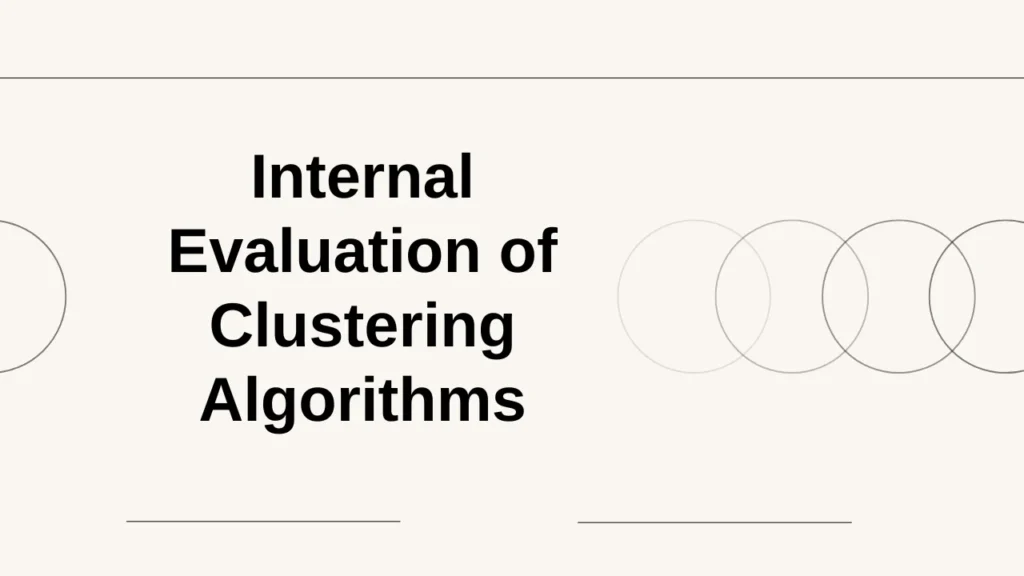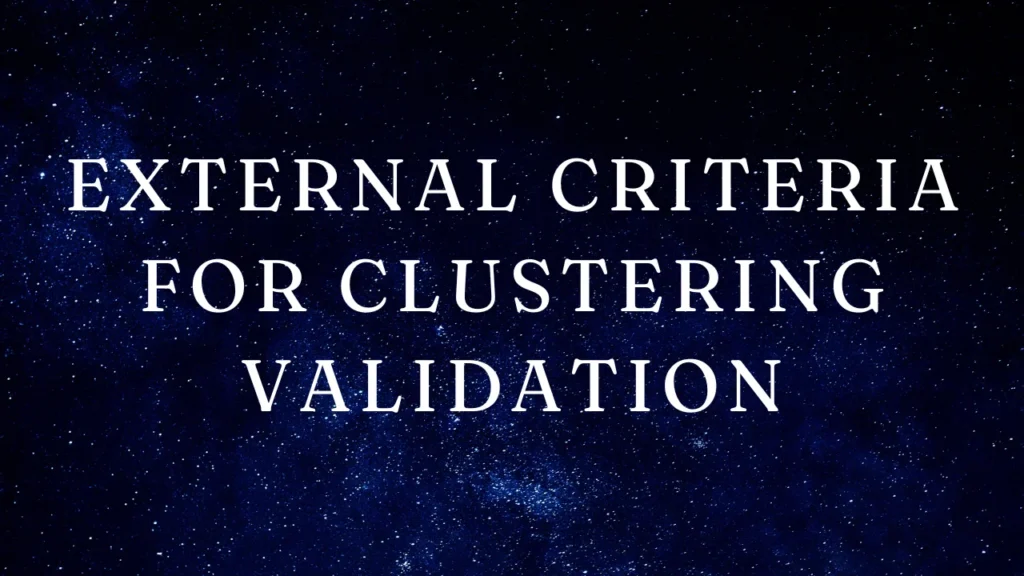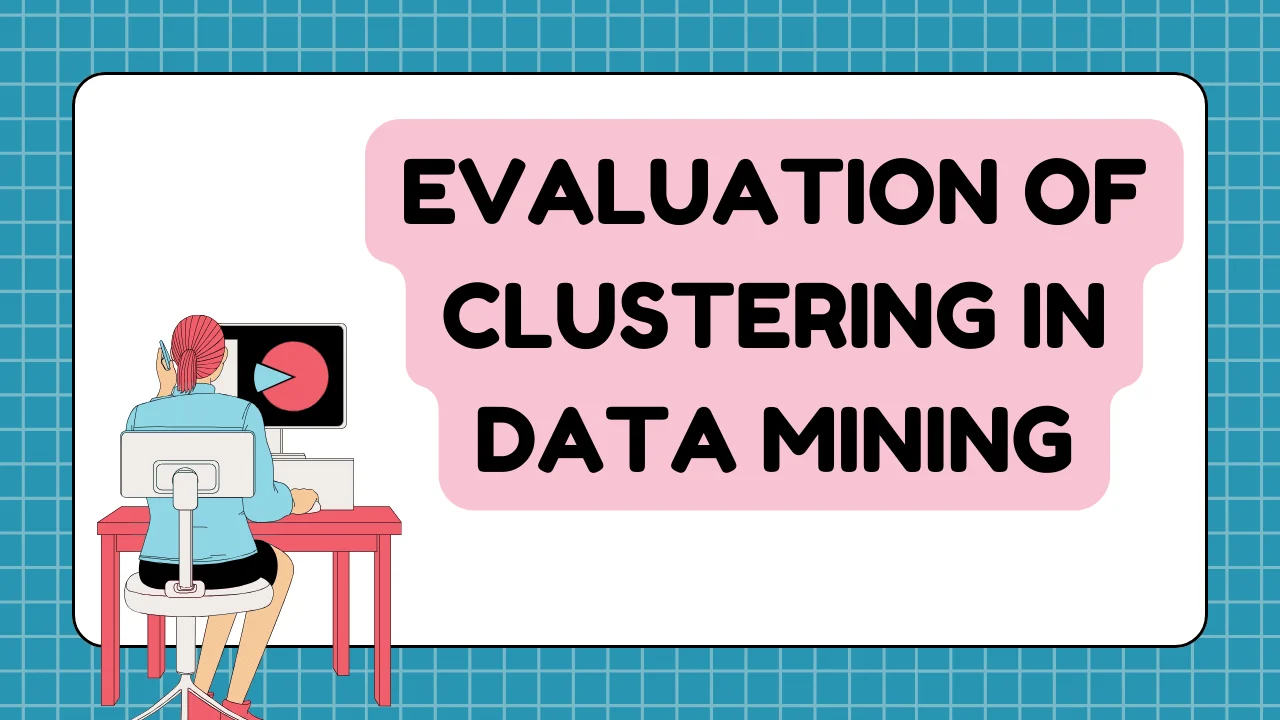Data mining relies heavily on clustering, a method that groups objects into sets where members of the same group share more similarities than differences. The purpose of evaluating clustering, known as “Evaluation of Clustering in Data Mining,” is to find out how efficient and effective the clustering algorithm is by examining these groups or clusters. Numerous applications in domains such as genomic research and marketing segmentation rely on accurate data grouping, which can only be confirmed through thorough evaluation.
Importance of Clustering Evaluation
Clustering evaluation is more than just a performance measure; it reflects the algorithm’s capacity to distinguish meaningful differences between data points. Data scientists who work to improve algorithms, companies that use segmentation to build strategies, and researchers who need to correctly classify data for future studies are all beneficiaries of clustering evaluation.
Internal Evaluation of Clustering Algorithms

Cluster Cohesion and Dispersion
A good cluster would have tightly packed data points that minimize variance, as cohesion measures how close elements are within a cluster. Conversely, separation improves the classification’s clarity and utility by describing how distinct or well-separated a cluster is from other clusters. It is common for clustering to be successful when there is high separation and high cohesion.
Purity Metric for Effective Clustering
One simple way to assess cluster quality is with the purity metric, which counts how many data points only come from one class in each cluster. Particularly helpful in supervised learning situations to validate unsupervised learning outcomes, a high purity score indicates that the algorithm’s clusters adequately match the underlying class labels.
Cluster Validity with the Rand Index
One way to compare how similar two sets of data are is with the Rand index. The Rand index is useful for determining how well the clusters are recovered because it compares the clustering results to a manually specified ground truth. Understanding the external validity of clustering results, particularly when ground truth labels are available, is made possible by this metric.
Employing Comparative Analysis of Clustering Models
Finding out how well various clustering models perform on the same dataset allows one to draw comparisons between them. By taking this tack, we can learn more about the circumstances in which specific algorithms excel and pick the most appropriate model for each given task.
External Criteria for Clustering Validation

External vs Internal Clustering Validation Techniques
In contrast to using external benchmarks like ground truth, this comparison shows the benefits and drawbacks of evaluating clustering effectiveness using internal metrics like separation and cohesion. External methods are essential for validating the accuracy of clustering against known labels, but internal methods are useful for assessing cluster tightness and separation without external data.
Effectiveness of Clustering Algorithms
How can we find objective metrics to evaluate clustering algorithms? As a result, we can have faith in the clustering results because we use methods like cross-validation and statistical testing to make sure the clusters we get are real and not just a fluke.
Impact of Cluster Quality on Data Mining Outcomes
Projects involving data mining are greatly impacted by the general quality of clustering. Poor clustering can mislead subsequent processes and result in erroneous data conclusions, whereas high-quality clustering can lead to more accurate insights and predictive models.
Cluster Stability in Validation
Another important external criterion is cluster stability, which measures how consistent clustering results are when there are slight variations in data or methodology. The algorithm’s robustness to noise and data changes is confirmed by stable clusters, making it reliable for repeated or ongoing applications.
Relative Methods in Clustering Analysis
Evaluating Through Silhouette Scores
An object’s degree of similarity to its own cluster relative to other clusters can be measured using the silhouette score. A high value suggests that the object is well-matched to its own cluster and poorly-matched to neighboring clusters; this metric ranges from -1 to +1. This approach clarifies, according to the underlying data structure, whether the cluster assignments are suitable.
Using the Davies-Bouldin Index
One more relative metric for clustering algorithm evaluation is the Davies-Bouldin index. It boils down to the sum of the scatter within clusters divided by the separation between them. When the Davies-Bouldin index is low, it means that the clusters are more dense and spaced out, which makes it easier to see how the data is organized. A low index indicates good clustering.
Leveraging the Dunn Index for Cluster Validation
Finding clusters that are both dense and well-separated is the goal of the Dunn Index. It is calculated as the ratio of the smallest distance between observations in the same cluster to the largest distance within the same cluster. When the Dunn Index is high, it means that the clustering structure is good, with small, closely packed clusters and large gaps between them.
Comparative Analysis of Clustering Models
Effectiveness of K-Means vs Hierarchical Clustering
It is possible to gain insight into the relative merits of K-means and hierarchical clustering by comparing the two. Hierarchical clustering constructs clusters in a tree-like structure, which is helpful for in-depth data exploration, while K-means generates compact spherical clusters and is efficient for big datasets. Based on the features of the dataset and the level of granularity that is desired for the clustering, this comparison aids in selecting the correct method.
Performance of Density-Based Clustering
The discovery of clusters with arbitrary shapes and the handling of outliers are two key performance metrics for density-based clustering algorithms such as DBSCAN. Geographic data analysis and image processing benefit greatly from their performance, which is particularly important in datasets with complex structures and varying densities.
Benchmarking Spectral Clustering Techniques
Spectral clustering accomplishes dimensional reduction and clustering in fewer dimensions by utilizing the eigenvalues of similarity matrices. For complicated structures that aren’t linearly separable, it works wonders. These methods can be demonstrated to be superior in handling non-standard data shapes by benchmarking them against more traditional clustering methods.
Latest Trends in Clustering Evaluation Methods for Machine Learning
Incorporating Machine Learning for Automated Cluster Evaluation
Using machine learning techniques to automate clustering evaluation is a recent trend. By training on features extracted from cluster attributes, machine learning models are able to forecast cluster quality. In large-scale data environments in particular, this automation greatly shortens the evaluation time.
Deep Learning for Feature Extraction in Clustering
By automatically extracting complex features from data, deep learning can improve clustering and enable more advanced clustering analyses. This method has demonstrated encouraging outcomes in domains such as picture and textual data, where conventional clustering algorithms falter.
Adapting Clustering Evaluation for Big Data
It is critical to modify clustering evaluation methods in order to effectively manage big data as data volumes increase. Particularly useful are methods that can run in parallel computing environments, lessen computational load, and keep clustering analysis quality high.
Also Read: Bayes Classification Methods in Data Mining
Frequently Asked Questions
What is clustering in data mining?
Clustering in data mining is the process of grouping a set of objects so that objects in the same group are more similar to each other than to those in other groups.
Why is the evaluation of clustering important?
Evaluation is crucial to verify the effectiveness of clustering algorithms, ensuring that the groups formed are meaningful and useful for further analysis.
How does the silhouette score help in clustering?
The silhouette score helps by measuring how similar an object is to its cluster compared to other clusters, indicating the clarity of the cluster formation.
What distinguishes K-means from hierarchical clustering?
K-means is optimal for large datasets and forming spherical clusters, while hierarchical clustering provides a detailed tree of cluster relationships, suitable for varying cluster sizes.
Can machine learning improve clustering evaluation?
Yes, machine learning can automate and enhance clustering evaluation by learning from cluster features and predicting the quality of clustering more efficiently.
Conclusion
A number of internal, external, and relative methods are employed in the multi-faceted process of data mining clustering evaluation, including techniques such as “Evaluation of Clustering in Data Mining,” to guarantee the efficacy of clustering algorithms. Stakeholders in various industries can benefit from the grouped data based on the distinct insights provided by each method regarding the quality and appropriateness of the clustering results. These assessment procedures are being further optimized by developments in big data and machine learning, which bode well for the future of clustering strategies in terms of accuracy and efficiency. To stay up with the ever-increasing data volume and complexity in modern analytics, this continuous improvement is crucial.

Brandy Stewart, an enchanting wordsmith and seasoned blogger, weaves compelling narratives that transport readers to uncharted territories. Infused with perceptive viewpoints and dynamic storytelling, Doris exhibits a command of language that enthralls both hearts and minds, leaving a lasting mark on the literary panorama.

